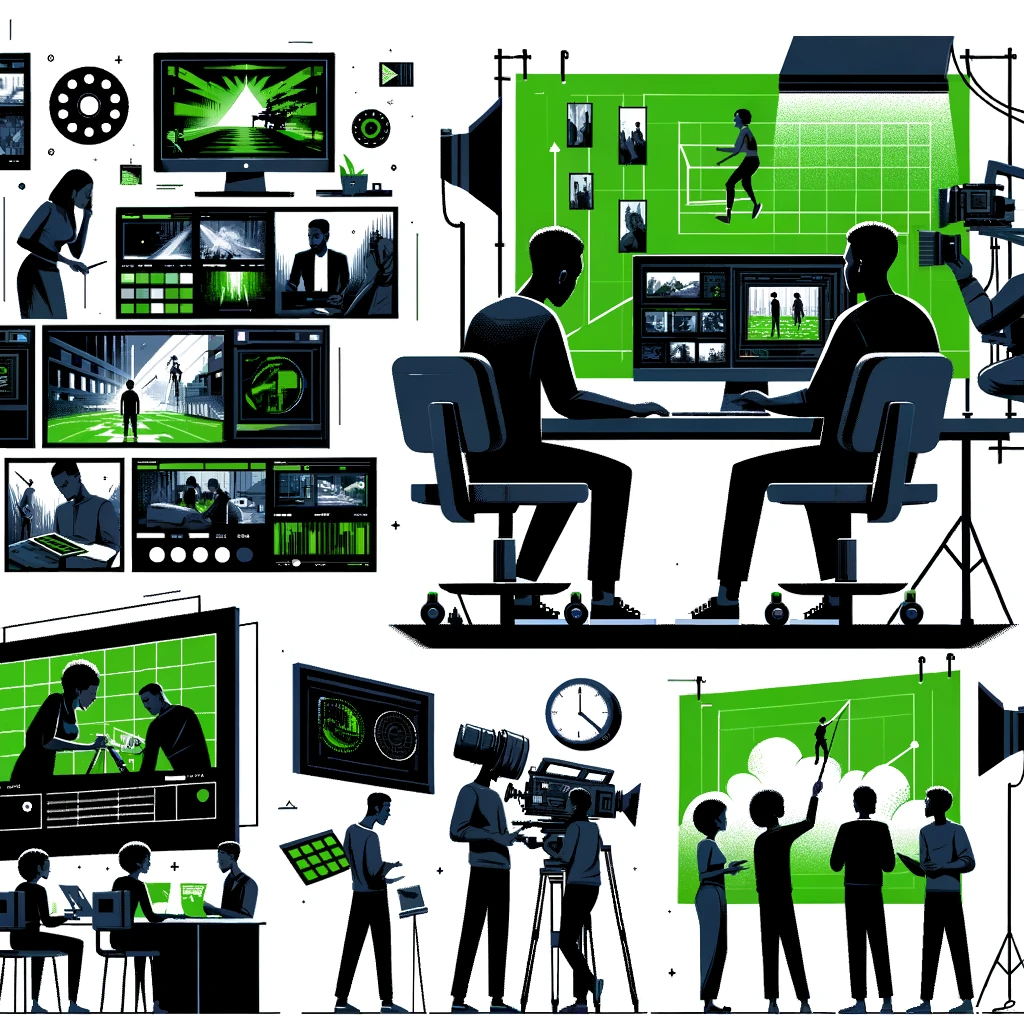Table of Contents
Visual effects (VFX) are powerful tools that help filmmakers expand the boundaries of storytelling. Whether you’re creating a supernatural thriller, a period epic, or a subtle drama, VFX allows you to shape worlds, manipulate reality, and elevate scenes that would be too expensive—or impossible—to shoot practically.
In this guide, we’ll explore how Nollywood filmmakers can use VFX to enhance their work, regardless of budget. From capturing footage with effects in mind to working with compositors in post-production, this article offers a foundational look at integrating VFX in a way that’s effective, resourceful, and creatively exciting.
What Are Visual Effects?
VFX refers to any digital manipulation of footage that enhances or transforms live-action scenes. Unlike practical effects (which are captured in-camera), visual effects are added in post-production through:
- Digital compositing
- Motion graphics
- CGI (computer-generated imagery)
- Matte painting and set extensions
In Nollywood, VFX has traditionally been modest—but it’s quickly evolving. More artists are gaining access to training and software, and international audiences are embracing Nigerian genre films. That’s opening the door for bigger visual ideas.
Why VFX Matters in Nigerian Filmmaking
Nigerian filmmakers often face financial and logistical constraints. But VFX offers a solution:
- It saves money (you don’t need to build every set physically)
- It enhances imagination (sci-fi, folklore, and fantasy are more possible)
- It adds production value (smart VFX can elevate how your film is perceived)
Even with a small team, Nigerian filmmakers can use VFX for:
- Explosions or gunfire
- Magical or supernatural elements
- Digital backdrops or crowd duplication
- Clean-up shots (removing gear, wires, or signage)
Planning for VFX From Day One
Great VFX begins in pre-production. If you plan properly, you’ll save money and avoid post-production headaches.
Capture for the Edit
When shooting, make sure you:
- Shoot clean plates (scenes without actors for background use)
- Use consistent lighting for green screen shots
- Document measurements and camera movements to help your VFX artist match the shot later
Visualize Your Shots
Use storyboards, animatics, or concept art to show what the effect should look like. This helps align the director, cinematographer, and VFX team.
Budget Wisely
Don’t over-promise effects you can’t afford. Even a few well-done VFX shots can be more powerful than dozens of mediocre ones.

VFX Techniques That Work on a Budget
You don’t need Marvel-level money to create compelling visuals. Some of the most effective techniques include:
1. 2D Compositing
Combining actors with painted or animated backgrounds using green screen. Often used for:
- Outdoor extensions
- Sci-fi environments
- Studio-to-location simulations
2. Matte Painting
Static, digitally painted images that stand in for large or elaborate environments. A skilled matte artist can replace an entire skyline—or build a city from scratch.
3. Particle Effects
Used for smoke, rain, dust, embers, and more. Most software (like Blender or After Effects) includes built-in particle tools.
4. Rotoscoping
Manually cutting out an actor or object from a scene to place them on another background. Tedious, but effective for many visual tricks.
5. Matchmoving (Camera Tracking)
Tracking real-life camera movements and applying them to 3D or composited scenes. This helps 3D elements feel like they were actually filmed in the same space.
A Glimpse Into the Post-Production VFX Pipeline
After filming, here’s how most VFX teams work:
- Rotoscoping and keying (isolating elements)
- 3D modeling and texturing (creating objects or creatures)
- Animation and lighting (bringing it all to life)
- Compositing (blending everything together)
- Rendering and review (exporting final shots and getting feedback)
Having clean footage and references from the shoot makes this process smoother, cheaper, and faster.
The Future of VFX in Nollywood
As VFX software becomes more accessible—and more Nigerian artists master the craft—the possibilities for homegrown innovation are endless.
Whether you’re exploring Yoruba mythology, futuristic Lagos, or experimental short films, visual effects can help bring bold ideas to life.
The key isn’t having the biggest tools—it’s knowing how to use what you have with purpose.
Final Thoughts
Visual effects aren’t just about spectacle. When done right, they become a quiet part of the story—supporting the world, the mood, and the message.
If you’re a Nigerian filmmaker dreaming big, let VFX be part of your toolbox. Plan ahead. Keep learning. Collaborate with talented artists. And most importantly—use VFX not to show off, but to bring your vision to life.















Leave a comment